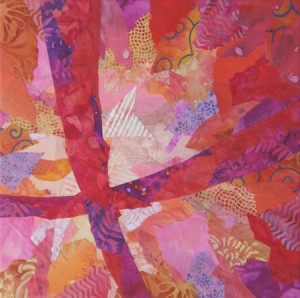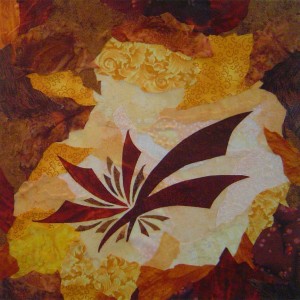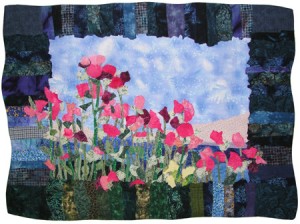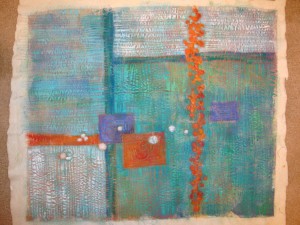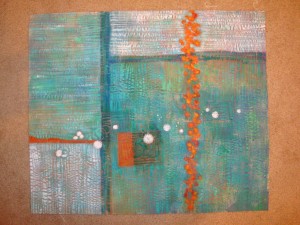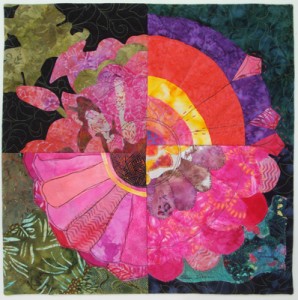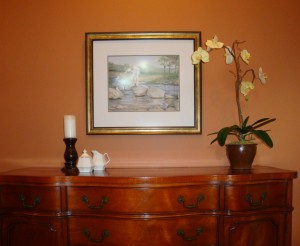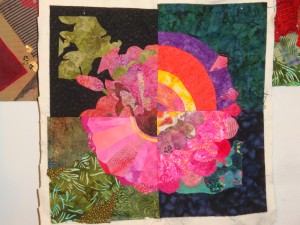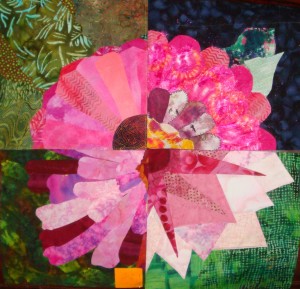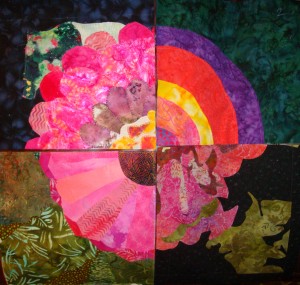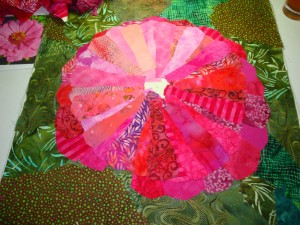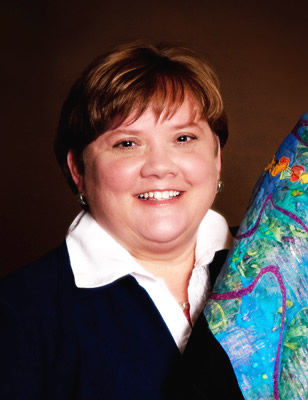My good friend, Jo-Ann Jensen, is a talented fiber and mixed media artist. She’s particularly adept at batik and various fabric dyeing techniques. So, I was delighted to recently preview her latest class, Double Vision.
Since a picture’s worth a thousand words, let me show you what we did. First, we each created a fabric collage of our own design. Here’s mine:
Click any image for a larger view.
(The orange was accidentally added in the next stage, but it didn’t matter.) Jo-Ann encouraged us to use fabrics with patterns, since this would give us some interesting opportunities in the next stage.
A hint for fiber artists: When using tone-on-tone fabrics, like the white background above, the motif can often get lost. To make it show up, put a darker color behind it. In this case, I used black.
In the next stage, we batiked on sheer silk, repeating the motifs of our collage (if desired.) This part was rather challenging, since we worked with melted wax. It took a little getting used to. Then, we painted the silk with fast-drying paint. Like this:
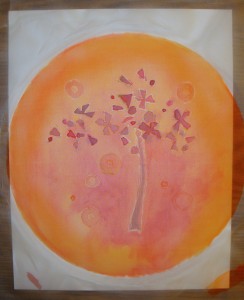
The paint also took a little getting used to, but as you’ll see, the final project conceals some of the little mistakes and irregularities.
Finally, Jo-Ann showed us how to mount our sheer layer in a way that would raise it off the collage layer. When mounted together, they look very cool.

What you can’t tell in this photo is the sort of holographic effect that the two components create. Especially since they don’t line up perfectly. That’s part of the effect, and the charm.
Isn’t Jo-Ann creative? If you live in Brevard county, Florida, you can take a class with her too. Click on the image below for all the details.

Thanks to Jo-Ann for this fun and creative experience!
Ellen Lindner

